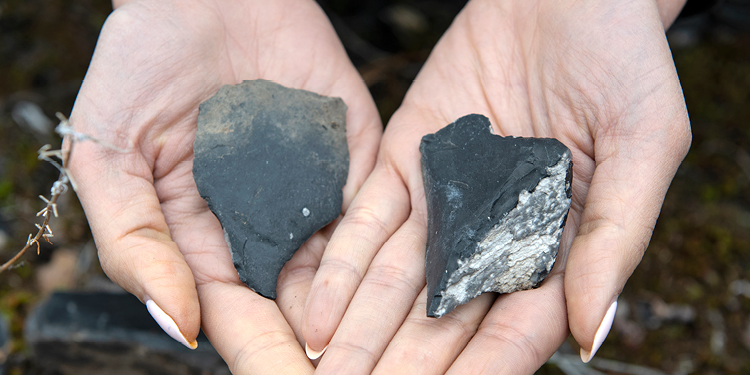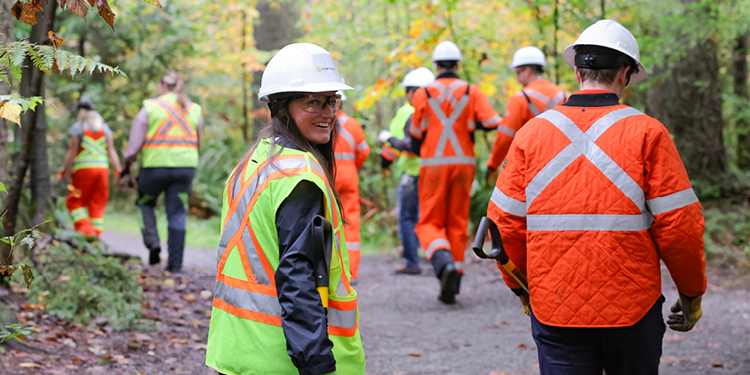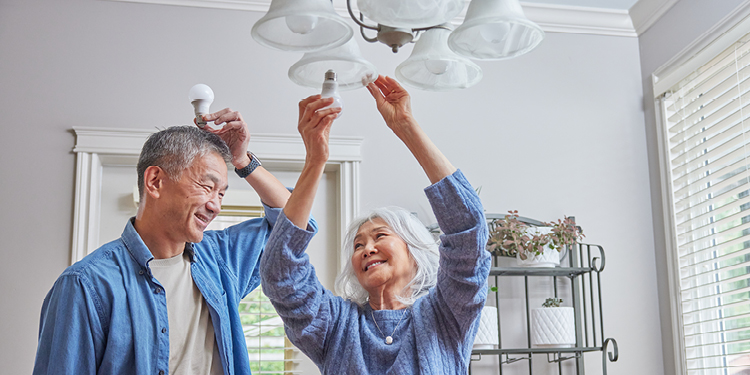How Indigenous communities are finding unique ways to improve energy efficiency in their homes
March 4, 2021
Making homes more energy efficient is not an easy task – it takes planning, coordination and dedication. We’ve seen many Indigenous communities take this initiative as they’ve worked to rectify issues that started more than 100 years ago.
Historical policies continue to impact Indigenous Peoples today as many homes on- reserve land are not energy efficient and require significant renovations to make these homes more comfortable and affordable. We’ve had many First Nation communities in B.C. reach out to us for funding support and this has given us an opportunity to work together on energy-efficiency upgrades. We’re also learning more about the unique challenges Indigenous Peoples face and how they're taking steps to improve housing conditions for their community members.
Recognizing the history of housing conditions in Indigenous communities
We first must look at the factors that have driven the need to improve the conditions of homes on-reserve land so we can better understand why all of this work is being done. According to census data from 2016, about 44 per cent of First Nations people living on-reserve land reside in homes that are in need of major repairs.1 This unfortunately is a consequence of the historical policies from more than 100 years ago, yet are still affecting community members living in these homes today. One of the many impacts of the Indian Act of 1876 was the federal government took responsibility of on-reserve housing in Indigenous communities.2 This left Indigenous Peoples with no control over their living conditions and the housing that was built did not meet the community’s needs. The lack of funding for on-reserve housing meant homes were not properly built to account for the region’s climate, resulting in housing that couldn’t withstand the vast amount of rain on the West Coast and the colder northern temperatures in B.C.3
Over time, a home needs to be repaired and maintained to help make it last longer and completing minor projects helps to avoid larger problems later on. However, it wasn’t clear as to who was responsible for this work as the federal government had jurisdiction over reserve housing.4 Indigenous Peoples were not even offered the opportunity to develop the necessary skills to build proper housing structures for their communities and perform this regular maintenance.5 This inaction has affected generations of Indigenous Peoples. The community members living in on-reserve housing have been greatly impacted, yet are the least responsible from this lack of planning to upkeep their community homes.
Indigenous Peoples continue to experience the residual effects of these policies and each community faces a unique set of challenges on how to address these issues. But many are finding solutions that are tailored for their community and will help make their community homes more comfortable and energy efficient.
Getting started with energy-efficiency upgrades
The Fort Nelson First Nation is one example of a community that found a unique way to complete a large amount of energy-efficiency upgrades. Due to the way homes were built on-reserve land, northern B.C. communities can experience even more effects of heat loss during cooler winter temperatures. To help community members, the Fort Nelson First Nation housing department, took a systematic and organized approach to find a way to make these homes more energy efficient.
The Fort Nelson First Nation hired Drew Burke to be a dedicated resource to help community members participate in our Energy Conservation Assistance Program, which we offer in partnership with BC Hydro. Through this program, households received free household energy assessments along with free energy efficiency upgrades such as LED lightbulbs, weatherstripping to seal in drafts around windows and doors, as well as energy-efficient showerheads for their homes on-reserve land.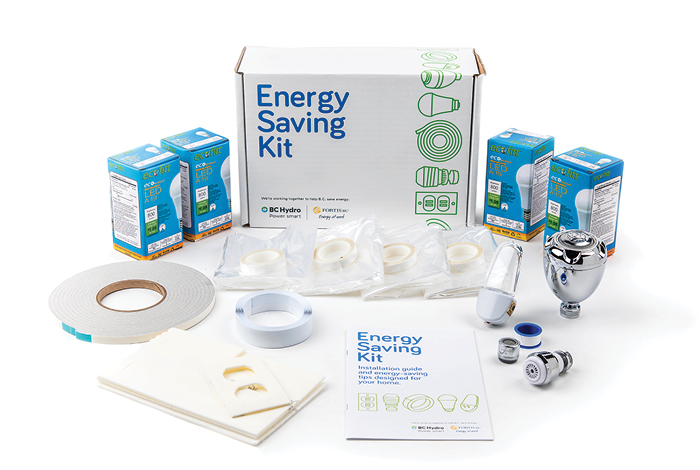
Household energy assessments can help identify the areas of significant heat loss and where targeted improvements can be made to increase energy efficiency in the home.
Drew completed 120 applications — the most applications we’ve ever received from one community. Considering Fort Nelson is one of the most northern cities in British Columbia, she worked hard to have these upgrades completed in a timely fashion to ensure the homes were ready for the upcoming winter.
Her attention to detail ensured all the applications were completed correctly to avoid delays. She also coordinated and scheduled the home appointments with contractors, which allowed for all of the energy assessments and installations of products to be completed within four months over the summer and fall with minimal rescheduling.
Carol Suhan, manager, conservation and energy management, FortisBC, is part of the team who works to connect Indigenous communities with our programs:
We were happy to support the Fort Nelson First Nation with these energy-saving upgrades through our program but it was their determination and organizational skills that made this such a success. The housing department led this project and worked to have as many households as possible sign up for the program and were then able to complete the work quickly and efficiently.
Carol Suhan, manager, conservation and energy management
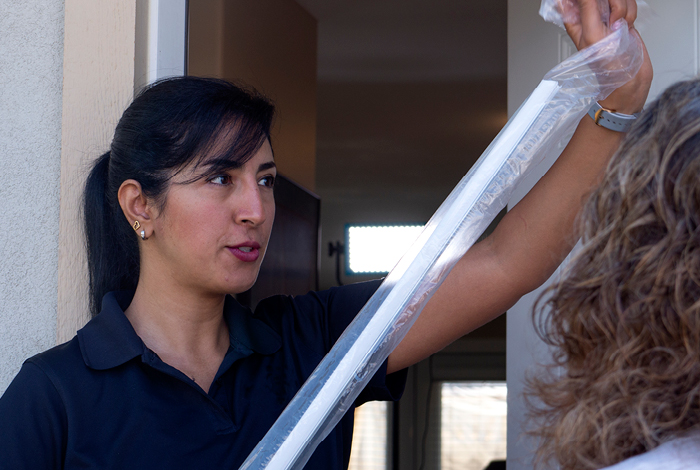
To help prevent heat loss, weatherstripping, as shown above, can be used around doors to help seal any gaps around the frame. All photos were taken prior to the COVID-19 pandemic and physical distancing requirements.
Taking the next steps to make community homes more energy efficient
Community members of the Osoyoos Indian Band were impacted with high energy bills due to older less efficient homes. As the electric utility in the area, it was important that we sat down with the community members to listen to their concerns so we could work together to find the best way forward.
“What we learned from these conversations and seeking solutions was that it was going to be important to find out how energy was being used in these homes, where there was significant energy loss and how we could work together to address these challenges,” said Carol.
To make a significant and long-lasting impact in an affordable way, it’s important to understand the key areas to target for energy-efficiency upgrades.
One of the upgrades offered through our Energy Conservation Assistance Program is replacing older inefficient fluorescent light bulbs with higher efficiency LEDs.
“After our initial conversations with members from the Osoyoos Indian Band, they took the first step to understand how their community homes were using energy,” explained Carol. Their housing team applied to our Energy Conservation Assistance Program and received free energy assessments and energy-efficiency upgrades.”
These weren’t the only upgrades the Osoyoos Indian Band completed. They realized there was more work to be done and reached out to us for funding support to have more in-depth EnerGuide® energy evaluations completed for homes on reserve.
The Osoyoos Indian Band worked with a certified energy advisor to identify areas of significant heat loss and inefficiencies within community homes. The information from these energy evaluations was used by the housing department to develop a strategic plan on how to address these issues. All of this information was then used to apply for additional funding from Indigenous Services Canada for the more extensive energy-efficiency upgrades.
The housing department also reached out to FortisBC for additional support to help cover the costs. We’ve provided more than $500,000 in rebates6 for these retrofit upgrades so far and retrofit projects are still continuing this year. The community is even taking energy efficiency a step further and are in the process of constructing six new high-efficiency homes that are expected to achieve Step Code rating of three or four of the BC Energy Step Code.
The Osoyoos Indian Band has completed a considerable amount of energy-efficiency upgrades that are positively benefiting those living in on-reserve homes. For the homes that had space and water heating upgrades, community members saw a $1,100 - $1,500 decrease in their annual utility costs, about a 40-45 per cent in energy savings.7 Beyond the savings, community members are noticing the homes are more comfortable year round.
The Osoyoos Indian Band is not only dedicated to improving energy efficiency in existing homes, but they are taking the initiative to build new homes to these higher standards. It’s inspiring to see how the hard work from the housing departments and contractors has translated into such incredible results over the last several years.
Carol Suhan, manager, conservation and energy management
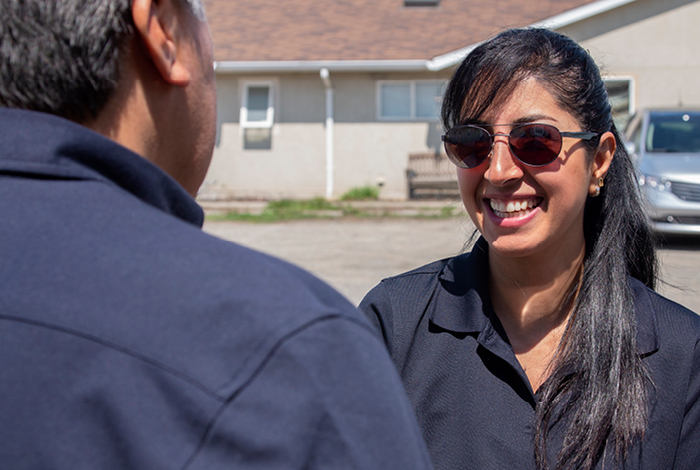
By working together over the years through our energy-efficiency programs, we’ve created and built long lasting relationships with many housing departments and we will continue to strengthen these relationships moving forward. All photos were taken prior to the COVID-19 pandemic and physical distancing requirements.
Making a difference together
From large-scale community-wide energy-efficiency projects, to helping individual residents, these are just two of the Indigenous communities that are working with us to reduce energy bills and improve home comfort for their members.
From our Energy Conservation Assistance Program and our Indigenous Communities Conservation Program we were able to provide more than $1.2 million in funding last year that went towards improving energy efficiency in homes and buildings across 21 First Nations communities.
Through our partnerships with many First Nation communities in B.C., we continue to learn more about their histories, cultures and traditions. These mutually beneficial relationships have expanded our learning as an organization about the unique issues First Nation communities face. The communities have all taken initiative to reach out to us, which has allowed the opportunity for us to work together and find the best pathways forward.
Programs to support energy-efficiency projects
We know there is still a lot of work to be done to improve the energy efficiency of homes for community members living in on-reserve housing. We’re committed to doing our part and working with communities to make these improvements. Through trust, respect and open communication we can continue to develop and strengthen relationships with Indigenous Peoples. It’s important that we take action to change our behaviour as a way to demonstrate our commitment to Reconciliation.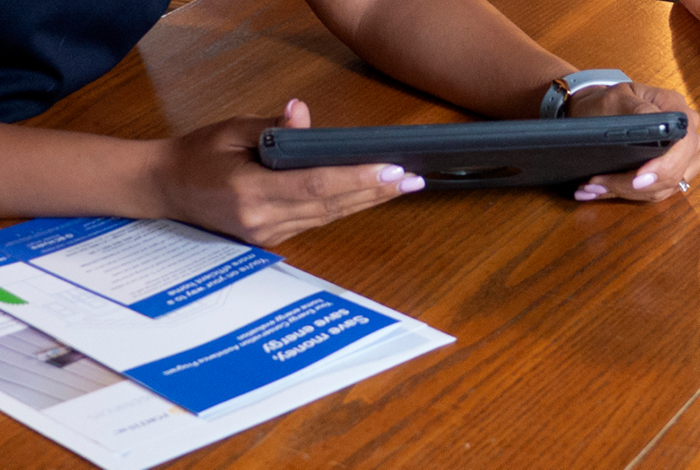
We offer personal support, custom rebates and free upgrades for Indigenous communities that are looking to make energy-efficiency upgrades in their homes, administration offices and community buildings.
The Indigenous Communities Conservation Program provides support to implement home energy upgrades such as new insulation, windows and doors, as well as space and water heating systems.6 For more information about this program email [email protected] or call 1-866-884-8833 and select option 4.
The Energy Conservation Assistance Program is a joint program offered by FortisBC and BC Hydro. The program offers free energy consultations to help community members understand their energy use along with the installation of energy saving upgrades. If you have any questions or would like to participate in the program email [email protected] or call 1-866-436-7847.
2 How to fix the First Nations housing crisis, The Tyee, 2019
3 How to fix the First Nations housing crisis, The Tyee, 2019
4 Submission to the National Inquiry into Missing and Murdered Women and Girls Office of Housing and Construction Standards, Ministry of Municipal Affairs and Housing Government of British Columbia, pg.2
5 Submission to the National Inquiry into Missing and Murdered Women and Girls Office of Housing and Construction Standards, Ministry of Municipal Affairs and Housing Government of British Columbia, pg. 1
6 This program has been updated. Some rebates and offers are no longer available.
7 Source: Data determined by the energy evaluator for the Osoyoos Indian Band retrofit projects (21-056.1).

